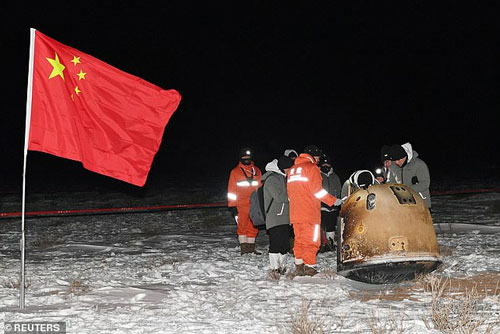Observer Report Beijing
China plans to launch a mission around 2030 to bring back samples from Mars, according to a press conference held by the China National Space Administration (CNSA) on June 12 in Beijing following the complete success of China’s first Mars exploration mission of orbiting, landing, and roving the red planet in one mission by Tianwen-1.
Besides, the country intends to launch a mission around 2025 to send a probe to fly around, land on, collect and return samples from a near-Earth asteroid and then orbit a main-belt comet for exploration.
A Jovian system exploration mission and interplanetary exploration mission will also be launched in the near future, said officials from the CNSA.
The success of Tianwen-1 represents a symbolic achievement in the independent innovation and leapfrog development of China’s space exploration cause, and marks six firsts in the history of the country’s aerospace industry, said Xu Hongliang, spokesperson of the CNSA, at the press conference.
According to Xu, the Tianwen-1 probe symbolizes the first time China sent a probe into an Earth-Mars transfer orbit, the country’s first interplanetary flight, the first time China’s probe realized soft landing on a planet other than Earth, the first time China had a probe rove on the surface of an extraterrestrial planet for exploration, the first time China realized data measurement and control as well as communication over a distance of 400 million kilometers, and the first time China obtained first-hand scientific data from Mars.
Tianwen-1 not only left China’s footprints on Mars for the first time, but completed orbiting, landing and roving on the red planet in one mission, which fully demonstrated the wisdom of Chinese aerospace engineers and indicated that the country has come to the forefront of the world in planetary exploration, Xu said.
Featuring a high starting point, great difficulty, and a multitude of challenges, China’s first Mars exploration mission has faced many problems since the demonstration stage, such as new environment, long distance, long time delay and a huge number of links in the mission, Xu noted.
The probe’s descent from its parking orbit to the surface of Mars is the link with the highest risk in the Tianwen-1 mission, said Sun Zezhou, chief designer of the Tianwen-1 probe, who explained that during the link, the spacecraft not only had to deal with the unfamiliar and capricious atmospheric environment of the red planet, but needed to complete a dozen of key operations independently.









